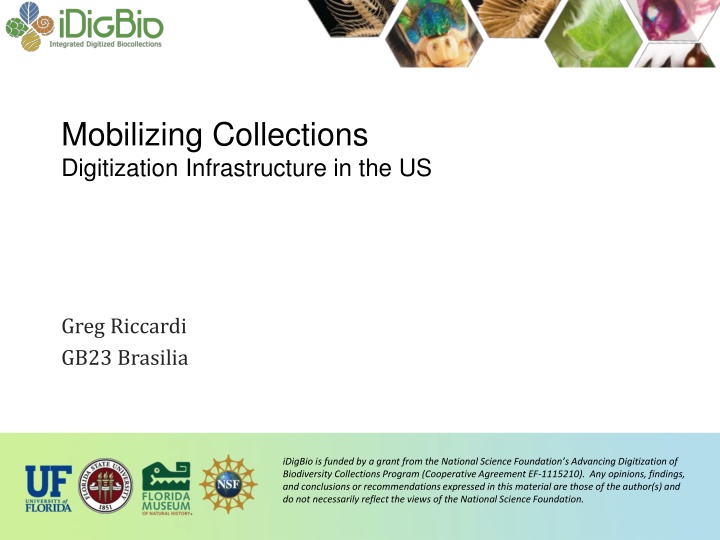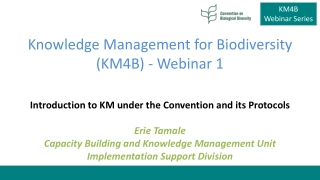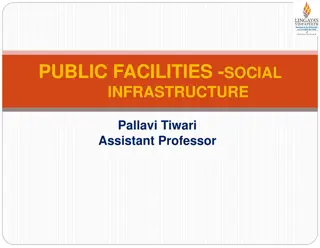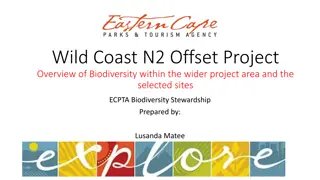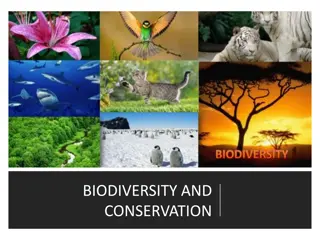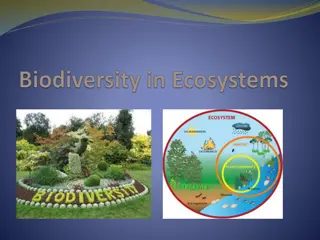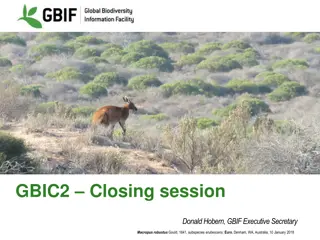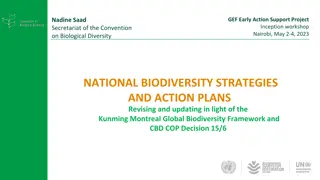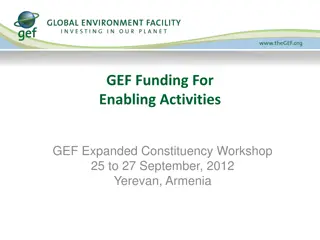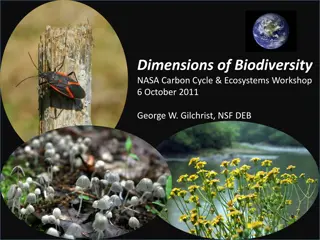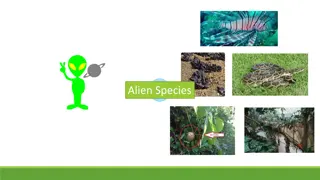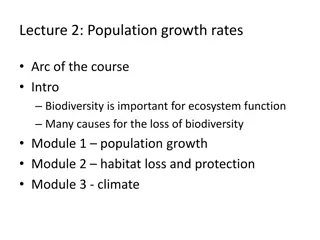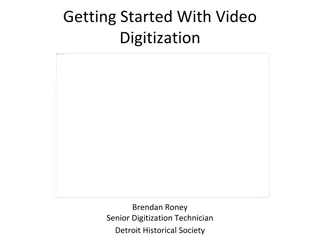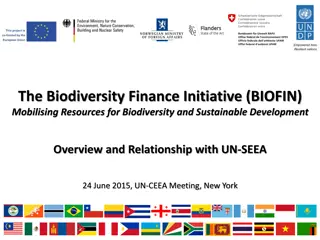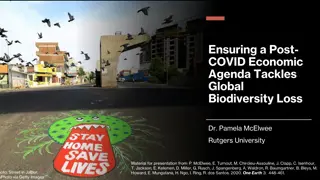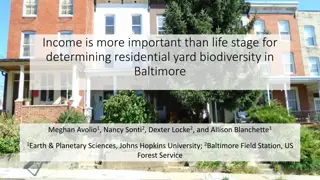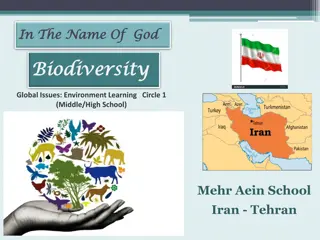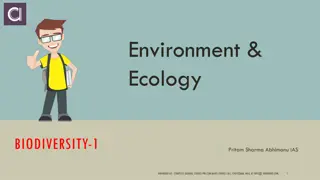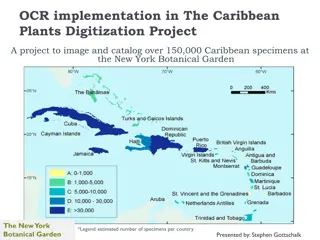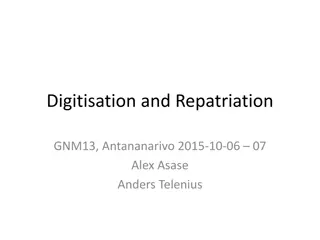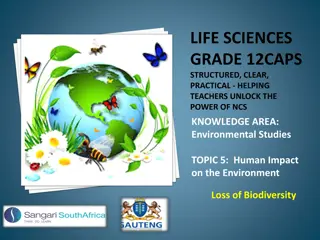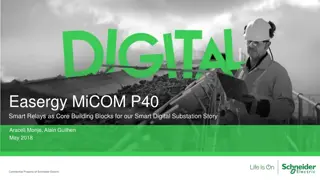Advancing Biodiversity Collections Digitization in the US
This material highlights the efforts and initiatives of the National Science Foundation's Advancing Digitization of Biodiversity Collections Program, focusing on digitizing and aggregating biological and paleontological records. The goal is to mobilize collections digitization infrastructure, develop thematic collections networks, and create a dynamic electronic resource to serve various needs related to the environment, human health, biosecurity, and more.
Download Presentation

Please find below an Image/Link to download the presentation.
The content on the website is provided AS IS for your information and personal use only. It may not be sold, licensed, or shared on other websites without obtaining consent from the author.If you encounter any issues during the download, it is possible that the publisher has removed the file from their server.
You are allowed to download the files provided on this website for personal or commercial use, subject to the condition that they are used lawfully. All files are the property of their respective owners.
The content on the website is provided AS IS for your information and personal use only. It may not be sold, licensed, or shared on other websites without obtaining consent from the author.
E N D
Presentation Transcript
Mobilizing Collections Digitization Infrastructure in the US Greg Riccardi GB23 Brasilia iDigBio is funded by a grant from the National Science Foundation s Advancing Digitization of Biodiversity Collections Program (Cooperative Agreement EF-1115210). Any opinions, findings, and conclusions or recommendations expressed in this material are those of the author(s) and do not necessarily reflect the views of the National Science Foundation. iDigBio is funded by a grant from the National Science Foundation s Advancing Digitization of Biodiversity Collections Program. Any opinions, findings, and conclusions or recommendations expressed in this material are those of the author(s) and do not necessarily reflect the views of the National Science Foundation.
ADBC: Advancing Digitization of Biodiversity Collections US National Science Foundation Plans to spend $10 million over 10 years The goal is to digitize and aggregate 1 billion biological and paleontological records over the 10-year life of the project. iDigBio project is the HUB of ADBC U of Florida, Florida State U Digitization projects Chosen by NSF peer review 18 Thematic Collections Networks 2 2
Advancing Digitization of Biodiversity Collections (ADBC) Developing networks, enhancing communication, facilitating collaboration To date: 17 TCNs, 152 unique institutions, ~276 projects, 50 states and Guam 3 3
Thematic Collections Networks (TCNs) TCN: network of institutions strategically digitizing information for a particular research theme, such as impacts of climate change or biota of a region. The Cretaceous World The Mid-Atlantic Megalopolis 4 4
NIBA Strategic Plan 2010 Vision Statement: NIBA will Develop an inclusive, vibrant, partnership of U.S. biological collections Document the nation s biodiversity resources Create a dynamic electronic resource Serve the country s needs in answering critical questions about the environment, human health, biosecurity, commerce, and the biological sciences 5 5
NIBA Goals 2010 Digitization of specimens will enable Benefits to collections Benefits to science and policy Particular benefits to science and policy climate change, species invasions, natural disasters, the spread of disease vectors and agricultural pests and pollinators, and other environmental issues. 6 6
What does iDigBio do? Enable digitization of biodiversity collections data Develop efficient & effective standards & workflows Workforce education & training Provide portal access to biodiversity data in a cloud computing environment Respond to cyberinfrastructure needs Enable access & discoverability Facilitate use of biodiversity data to address key environmental and economic challenges Researchers, educators, general public, policy-makers, Plan for long-term sustainability of the national digitization network & effort Expand participation: partners, data sources, public, Proliferate and broaden uses of biodiversity data Cyber- infrastructure Serving the Research Community Digitization Education & Outreach 7 7
8 iDigBio Success: Workshop Principles Community-driven process Each workshop Created in response to need Organized by interested parties Attended by diverse group Geographical distribution of sites Demographic distribution 8 8
Where dies iDigBio go from here? Limited time program (10 years) How to sustain activities? Digitization projects? Support for digitization improvements? How to sustain data infrastructure? Data persistence? Data quality? Data portal? How to sustain commitment Governmental? Community? 10 10
iDigBio, GBIF and International Partners Data sharing iDigBio sharing with GBIF and ALA, more to come Digitization techniques and training SiBBr workshop in November 2014 Data Carpentry workshops in Kenya, Phillipines, Costa Rica Technology sharing Taxonomic names services We are encouraged by our funders to collaborate Issues are global, effort needs to be global 11 11
